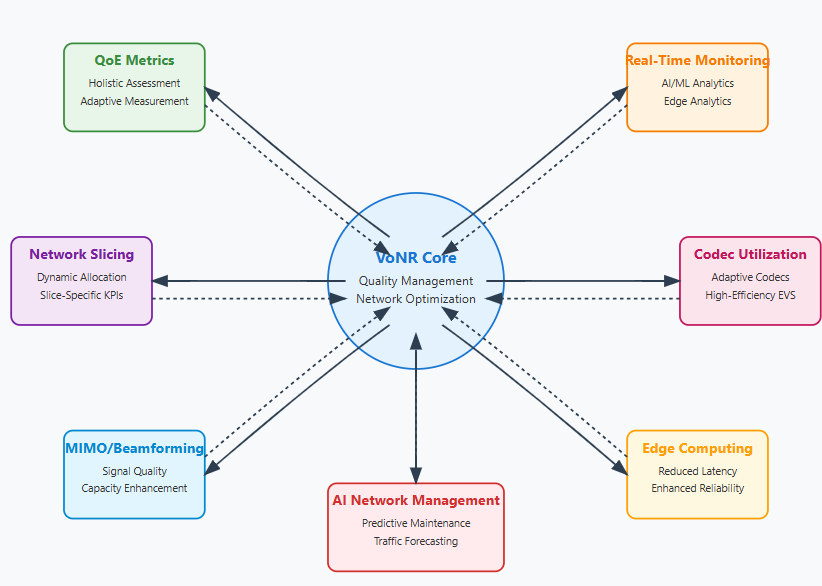Optimizing 5G Network Reliability Through Advanced Operations and Maintenance
telcomatraining.com – The fifth generation of mobile networks, known as 5G, is revolutionizing the way we connect and communicate. With its promise of ultra-low latency, massive device connectivity, and lightning-fast data speeds, 5G is the backbone of future technologies such as autonomous vehicles, smart cities, and advanced IoT ecosystems. However, to truly harness the full potential of 5G, ensuring network reliability is critical. This can be effectively achieved through advanced operations and maintenance (O&M) strategies.
Why 5G Network Reliability Matters
Network reliability is more than just reducing downtime—it’s about guaranteeing consistent, high-quality connectivity for users and devices alike. For industries that rely on real-time communication and automation, even a few seconds of network interruption can lead to significant losses or safety risks. Therefore, optimizing the reliability of 5G networks is not optional—it’s a necessity.
The Role of Advanced Operations in 5G
Traditional network operations are no longer sufficient in the dynamic and complex 5G environment. Advanced operations leverage automation, artificial intelligence (AI), and machine learning (ML) to proactively manage and optimize network performance. Here are key operational strategies improving 5G reliability:
1. Predictive Analytics and AI Monitoring
By deploying AI-powered tools, operators can monitor network behavior in real-time and forecast potential failures before they occur. Predictive analytics enables early detection of anomalies, allowing preemptive measures that minimize service interruptions. These smart systems learn from historical data, adapting over time to enhance accuracy and efficiency.
2. Self-Healing Networks
Self-healing capabilities are becoming a cornerstone of 5G operations. These networks can autonomously detect faults and reconfigure themselves to maintain service quality without human intervention. For example, if a base station fails, the system can automatically reroute traffic to nearby cells to avoid service disruption.
3. Automated Network Slicing
Network slicing allows operators to create multiple virtual networks on a single physical infrastructure. Each slice can be tailored for different services or customer needs. Advanced O&M tools ensure these slices are optimized and maintained individually, improving service reliability and performance across various use cases.
Enhancing Maintenance Practices for 5G
In addition to smart operations, proactive maintenance is key to reliable 5G performance. Advanced maintenance techniques reduce unplanned outages and extend equipment lifespan. Here’s how:
1. Remote Diagnostics and Maintenance
With the integration of IoT and remote sensors, engineers can perform diagnostics without being physically present. Remote maintenance allows for quicker issue resolution, reducing downtime and improving overall efficiency.
2. Digital Twin Technology
A digital twin is a virtual model of a network system that mirrors its real-time performance. Using this technology, operators can simulate various scenarios and test the impact of changes before implementation. This helps prevent system failures and enhances decision-making for maintenance strategies.
3. Lifecycle Management and Upgrade Planning
Maintaining 5G infrastructure requires a long-term view. Operators need to regularly update software, replace aging hardware, and upgrade systems based on evolving demands. A well-structured lifecycle management plan ensures that all components are operating at optimal capacity.
The Future of 5G O&M
As 5G networks continue to expand, the role of automation, AI, and cloud-native technologies in operations and maintenance will become even more vital. With zero-touch O&M solutions on the horizon, future networks will be more autonomous, agile, and self-optimizing than ever before.
Conclusion
Optimizing 5G network reliability through advanced operations and maintenance is a critical strategy for service providers aiming to deliver uninterrupted, high-performance connectivity. By embracing AI-driven operations, predictive maintenance, and innovative technologies like digital twins, the telecommunications industry can ensure the resilience and efficiency of next-generation networks. As we move deeper into the digital era, these advanced O&M practices will be the key to unlocking the full potential of 5G.







